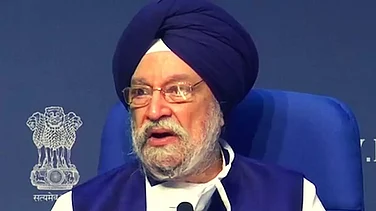Union Consumer Affairs and Renewable Energy Minister Pralhad Joshi on World Wind Day 2025 on June 15 said that India has achieved 51 gigawatts (GW) wind energy capacity, 150% growth in a decade as of May, according to ANI.
Speaking at a stakeholder meeting in Bengaluru, he shared that India needs reliable energy from wind, solar or other sources to emerge as a manufacturing hub, reported TOI.
“Wind energy is not a component of our renewable energy strategy, but it is at the heart of it and at the centre of Atma Nirbhar Bharat,” he said.
“India has achieved 51.5 GW wind capacity, 150% growth in a decade and is now exporting turbines and components globally. We are moving steadily towards the 100 GW wind target by 2030, including 30 GW from offshore projects, backed by strong policy reforms and a robust manufacturing ecosystem,” Joshi said in a post on X, on the occasion of Global Wind Day on June 15.
In another post on X, he wrote, “On this Global Wind Day, let’s celebrate the power of wind driving India’s clean energy growth. With 51.5 GW capacity and rising, we are moving towards an #AatmanirbharBharat powered by innovation, green technology and sustainable progress. #GlobalWindDay.”
According to Down To Earth, Gujarat secured the top spot with wind capacity rising to 12,677 MW by March 2025, an 8.14% increase. Tamil Nadu maintained its second-place with 11,739 MW, up 10.71%. Karnataka recorded the fastest growth, with a 22.13% jump to 7,351 MW.
Slow Grid Expansion Threatens Targets
According to Down To Earth, the government has proposed expanding grid capacity to 111 GW by 2030, with 94 GW targeted by 2027 through initiatives such as the Green Energy Corridor and high-voltage direct current networks. However, the pace of grid deployment continues to lag behind the pace of renewable installations, causing a hurdle in smooth energy transition.
According to a report published by Global Energy Monitor (GEM) on February 26, India needs to double its annual solar and wind capacity over the next five years to meet its 2030 clean-energy targets, despite record additions in 2024.



























